Key takeaways:
- Engagement strategies such as asking questions, sharing personal stories, and incorporating interactive elements create a stronger connection with the audience.
- Storytelling is critical for making complex ideas relatable and memorable, fostering emotional connections that linger after the presentation.
- Embracing authenticity in presentation style and sharing personal experiences can enhance audience engagement and understanding.
- Utilizing role-playing exercises and humor can transform sessions, promoting collaboration and making the experience enjoyable for participants.
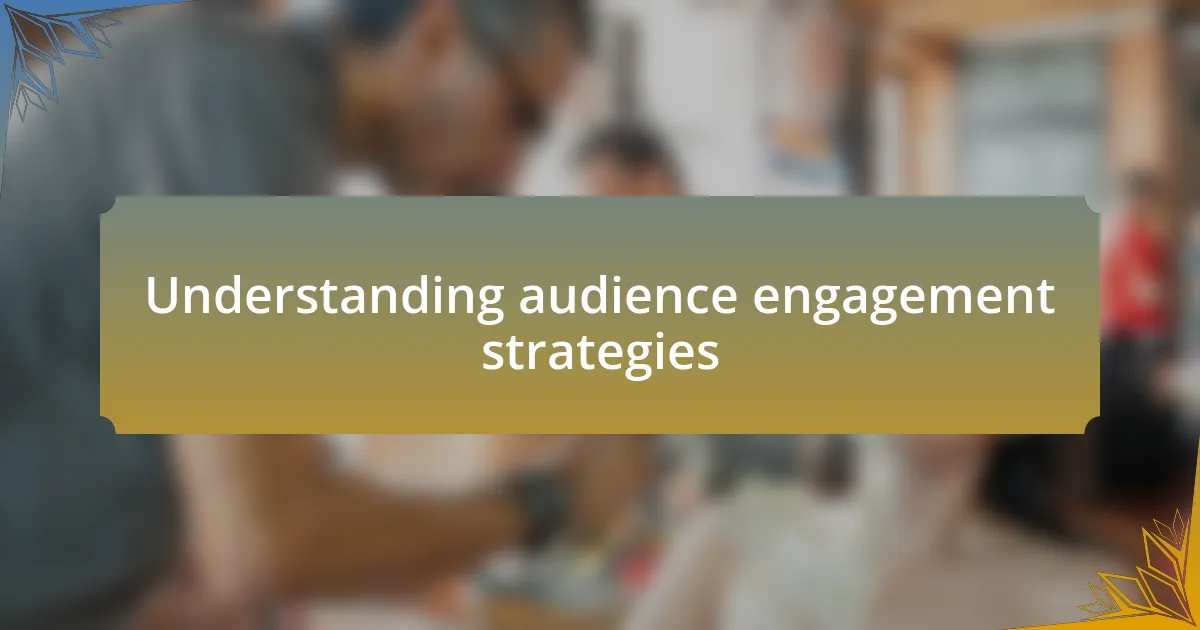
Understanding audience engagement strategies
Understanding audience engagement strategies goes beyond merely presenting information; it’s about creating a connection. I remember attending a conference where the speaker paused to ask the audience their thoughts on a topic before proceeding. This simple act transformed the atmosphere. It made everyone feel valued and part of the bigger conversation. Isn’t it fascinating how a small interaction can boost engagement?
Another effective strategy is to share relatable stories. I once heard a presenter recount a failure they faced and how it shaped their path. The honesty resonated deeply with the audience. It sparked conversations during breaks and created a sense of community. Have you ever noticed how stories often linger in your mind longer than facts? That’s the power of emotional connection.
Lastly, incorporating interactive elements can significantly enhance engagement. I recall a session where participants were encouraged to use their smartphones to vote on various topics. The immediacy of their input led to lively discussions. People were not just passive listeners; they felt a stake in the content. How often do you find yourself more engaged when you can actively participate rather than just watch?
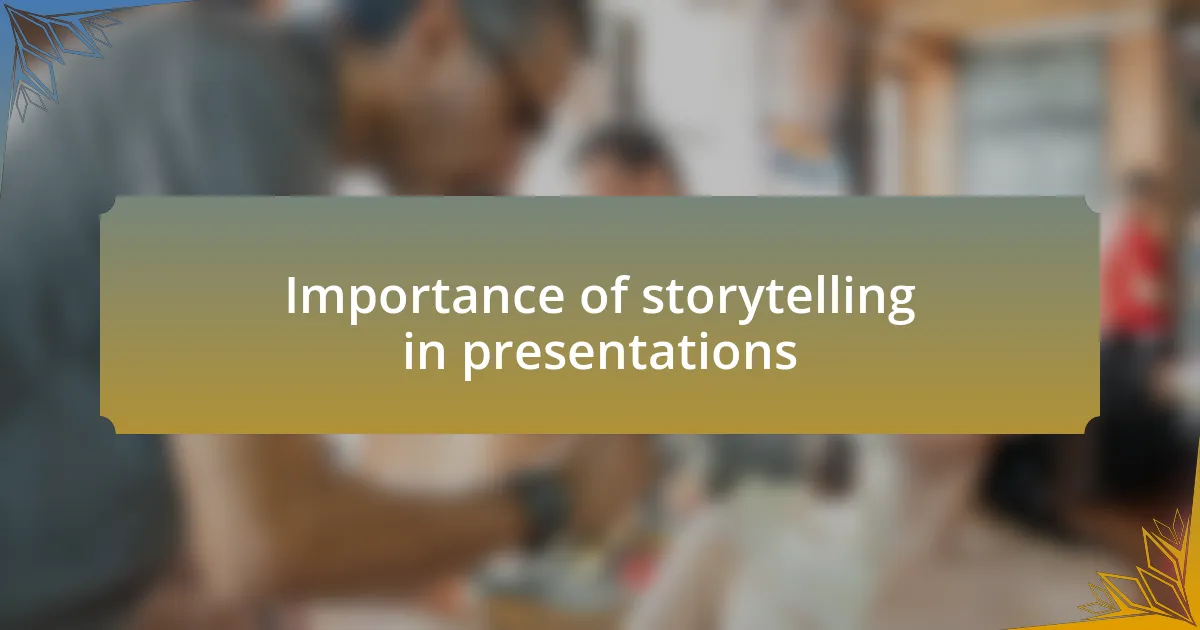
Importance of storytelling in presentations
Storytelling in presentations can truly transform the experience for both the speaker and the audience. I remember a time when I shared a personal story about a pivotal project that went awry. The moment I revealed my initial fears and eventual triumph, I saw heads nodding in understanding. It became more than just a story; it created a shared space where vulnerability sparked connection. Can you recall a time when a narrative shifted your perspective or ignited your interest?
Moreover, storytelling allows complex ideas to be conveyed in a more digestible manner. Instead of bombarding the audience with data, I once illustrated a market trend through a story about a small business facing tough competition. As I painted the picture of their struggle and eventual innovation, the audience leaned in, captivated. Isn’t it remarkable how a well-crafted narrative can make statistics feel not just relatable but urgent?
The emotional weight of a story can also linger far beyond the presentation. I’ve noticed that when I conclude with a thought-provoking tale, many attendees approach me afterward, eager to discuss their interpretations. It’s as if the story becomes a bridge, connecting my experiences to their insights. How often do you remember the numbers from a presentation versus the feelings evoked by a compelling tale?
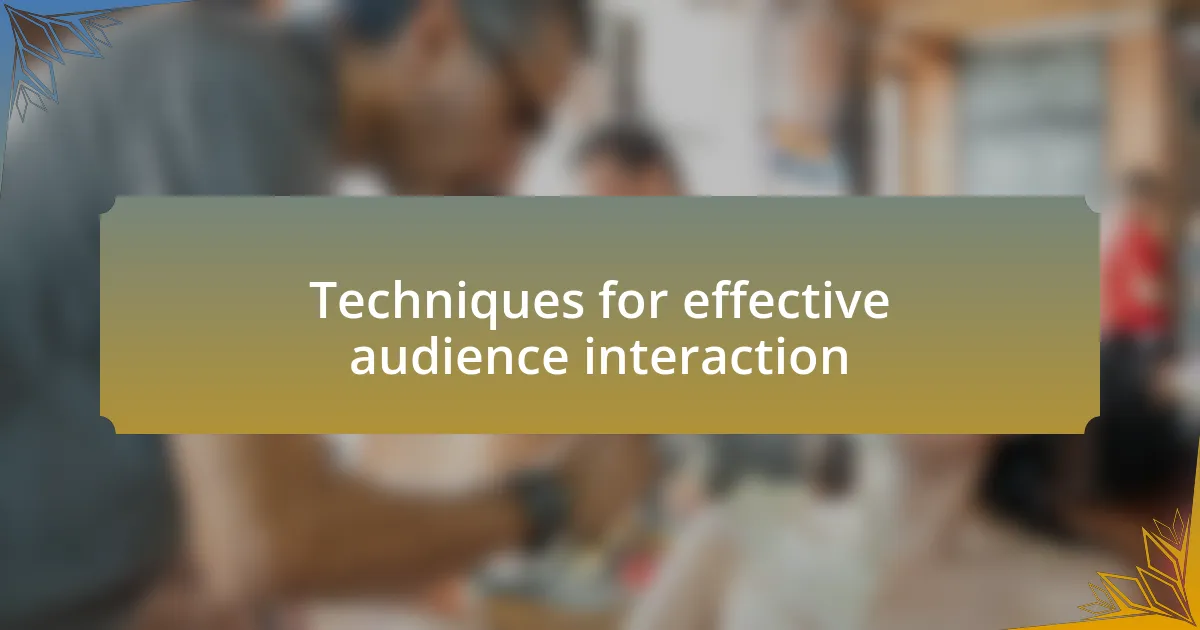
Techniques for effective audience interaction
Engaging the audience starts with asking questions that invite participation. During my last presentation, I threw out a provocative question about customer expectations, and I could feel the energy shift in the room. When people feel prompted to share their thoughts, it creates a collaborative atmosphere where everyone feels invested. Have you ever noticed how a single question can ignite a lively discussion?
Utilizing interactive elements, such as polls or live demonstrations, can also enhance audience interaction. In a recent workshop, I used a live poll to gauge participants’ opinions on emerging tech. The immediate feedback was thrilling and made my presentation feel dynamic. Bringing people into the process fosters a sense of community, making them more likely to remember not just the content, but the shared experience.
Another technique I’ve found effective is storytelling paired with role-playing exercises. For instance, during a session on customer service, I divided the audience into groups to role-play various scenarios. I watched as they laughed, learned, and even empathized with real-world challenges. How powerful is it to step into another’s shoes and feel their experiences? It’s a memorable way to cement lessons and foster deeper connections.
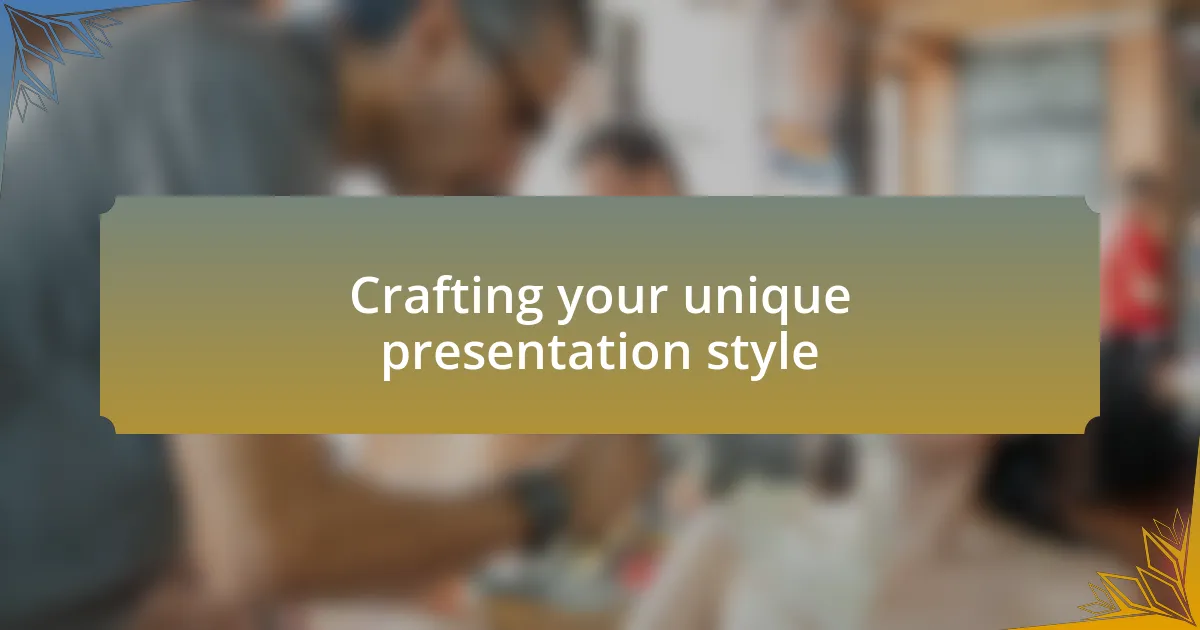
Crafting your unique presentation style
Finding your unique presentation style hinges on embracing authenticity. When I first started presenting, I was overly focused on adopting the styles of seasoned speakers, which left me feeling disconnected. Over time, I realized that my storytelling approach, infused with genuine emotions and vulnerabilities, resonates better with my audience. Have you ever felt a stronger connection with someone who shares their flaws rather than just their successes?
Experimenting with different techniques can also unveil your unique flair. For instance, I tried incorporating humor into a technical presentation, and to my surprise, it not only made the audience laugh but also highlighted the key points more effectively. This playful approach transformed what could have been a dry session into an engaging experience where participants were not just listening but genuinely enjoying themselves. Isn’t it remarkable how a little laughter can break down barriers and create a welcoming environment?
Moreover, the use of personal anecdotes can be a powerful tool in shaping your presentation style. I once shared a moment from my career where I faced a significant challenge, which led to a heartfelt conversation afterward. It reminded me how vulnerable storytelling can create a bridge between the speaker and the audience. Have you ever noticed how a simple story can change the atmosphere of a room? I encourage you to reflect on your own experiences and let them guide your presentations; authenticity truly captivates.
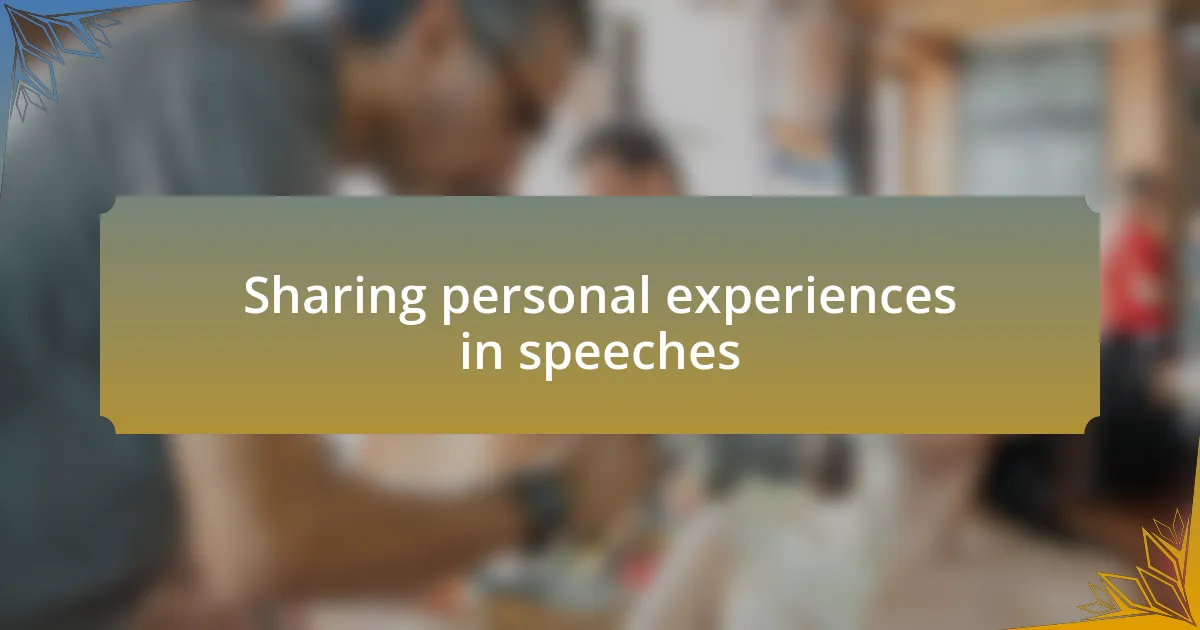
Sharing personal experiences in speeches
Sharing personal experiences in a speech can truly elevate your connection with the audience. I remember during one presentation, I opened with a story about a failed project I had led early in my career. The vulnerability in admitting my mistakes not only elicited sympathetic laughter, but it encouraged others to share their own mishaps, fostering a sense of community in the room. Have you noticed how stories of failure often resonate more deeply than tales of victory?
Moreover, revealing a slice of my life allows me to humanize complex topics. For instance, when discussing customer service techniques, I shared a particularly difficult interaction that taught me invaluable lessons about empathy. As I recounted the anxiety and uncertainty I felt in that moment, I could see heads nodding in recognition throughout the audience. It made me realize that vulnerability invites honesty; when I share my struggles, the audience feels more confident sharing theirs as well.
Lastly, I find that weaving in personal anecdotes helps to break down barriers, making the content more relatable. Once, while explaining the significance of active listening, I shared a heartwarming moment when a simple acknowledgment from a colleague made all the difference in my day. This little nugget of experience turned an abstract idea into something tangible, prompting many in the audience to reflect on their own interactions. How often do we underestimate the power of simply being present in a conversation?